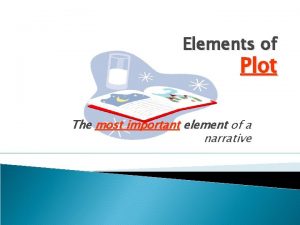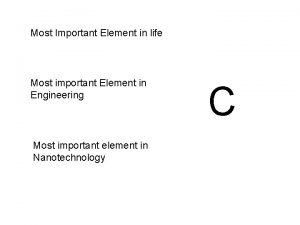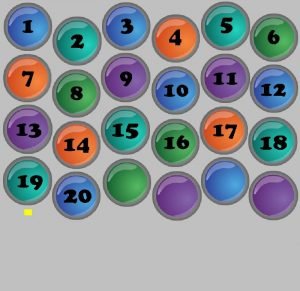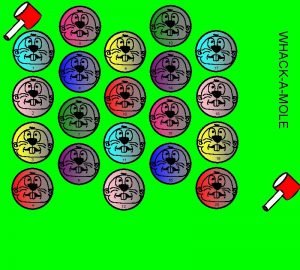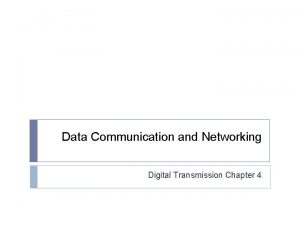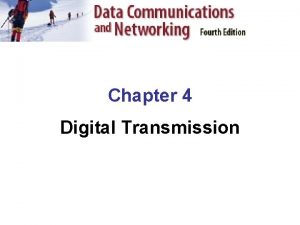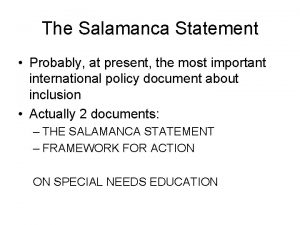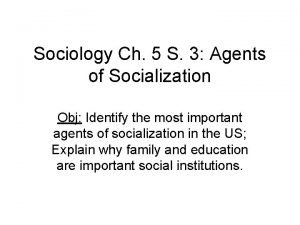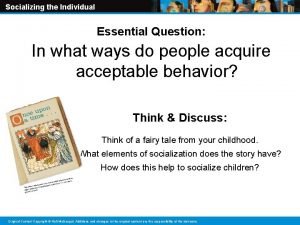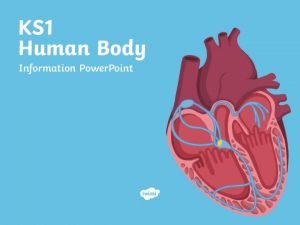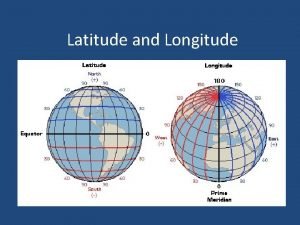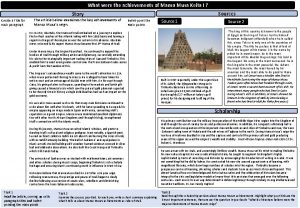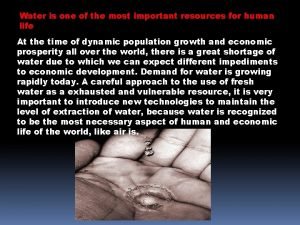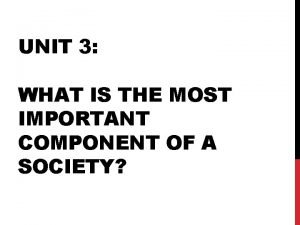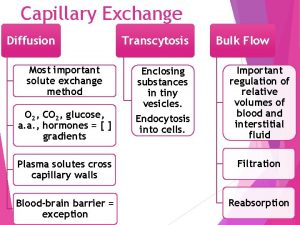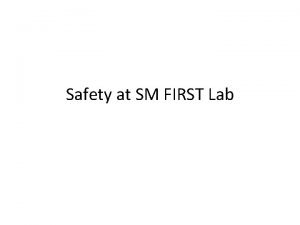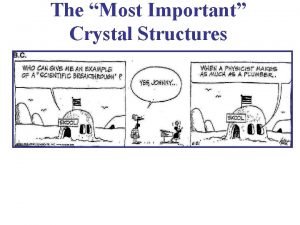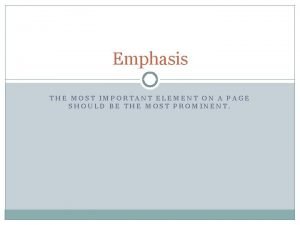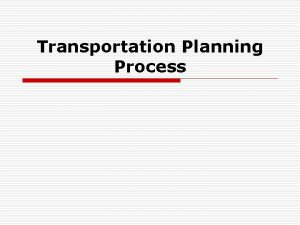Planning Planning is considered the most important element





























- Slides: 29

Planning • Planning is considered the most important element of the administrative process. • The higher the level of administration, the more the involvement and time devoting to planning. • A good plan is the basis of any successful program. • Sufficient time should be given to the process of planning. • More than one plan should be available to choose from to meet the existing plan.

Definition of Planning • “Planning is a projected or predetermined course of action designed to achieve a specific goal or objective. ” • Planning determines What? When? Where? How? Why? And by whom? Things will be done. • It involves “decision events”. making for future

Process of systemic planning 1. Establishing goals and objectives 2. Designing alternative courses of action 3. Analyzing and predicting the consequences 4. Selecting the best course of action 5. Implementing the selected plan and performing periodic evaluation to assure success of plan

Principles of planning cont…. . • Planning is a dynamic (non-static) process • It is a continuous circular process Planning Evaluation • • Futuristic Decision making process Dynamic Flexible Execution (implementation)

Principles of planning cont…. . • Participative planning is sharing the program planning with other people, staff and agencies concerned with the program. • Participative planning have advantages and disadvantages.

Principles of planning cont…. . • Planning of a program is based on: – Needs and demands of the public – Available resources – Attitude of the public

Principles of planning cont…. . • • • intervening factors to a plan may be social, economical or political, and they may be related to either: – External environment (community) – Internal environment (the organization) • Establishing priorities are essential in planning (What are these priorities? ? ? )

Principles of planning • Being an intellectual activity it needs knowledge, experience, reasoning and the mastering of special skills and techniques. Examples of different techniques of planning are: – PPBS: Planning/Programming/Budgeting system – PERT: Performance/Evaluation/Review technique – CPM: Critical Path Method

Steps for Developing a Financial Plan Evaluation 1. Needs Budget Goals Programs Objectives

Planning/programming/budget systems (PPBS introduced by U. S. Department of Defense Designed to provide better and more objective information for planning educational programs and making choices among alternatives way of extending planning period and duration of a program

PPBS Cycle adding to & improving alternative plans 1. establish objective goals determining financial cost of alternative plans improving the objectives evaluating results

Performance/Evaluation/Review technique PERT When we use PERT ? • PERT is used when activity times are uncertain. – Determine the duration of the project. – Decision making under risk

Program evaluation and review technique cont…… The new technique takes recognition of three factors that influence successful achievement of research and development program objectives: time, resources, and technical performance specifications. PERT employs time as the variable that reflects planned resource-applications and performance specifications. With units of time as a common denominator, PERT quantifies knowledge about the uncertainties involved in developmental programs requiring effort at the edge of, or beyond, current knowledge of the subject – effort for which little or no previous experience exists.

The Critical Path Method (CPM) is one of several related techniques for doing project planning. CPM is for projects that are made up of a number of individual "activities. " If some of the activities require other activities to finish before they can start, then the project becomes a complex web of activities.

Organization • Definitions: “ Organization is any collection of persons, materials, procedures, ideas or facts arranged and ordered that the combination of parts makes a meaningful whole that works towards achieving organizational objectives. ” “The process of organization implies to the arrangement of human and non-human resources in an orderly fashion to make a meaningful whole that accomplishes organizational objectives. ”

Organization • The organizational process is classified into: – Structural organization – Functional organization

Organization • Principles of organization: – Departmentation – Acquisition of human and non-human resources – Specialization and division of labor – Coordination – Authority and responsibility – Centralization and de-centralization – Unity of command – Line and staff

Staffing • It is the process of “personnelizing” the organization, by hiring the right type and adequate number of workers to each unit for the time required for the program, through the following steps: – – Identifying the type and number of personnel Recruitment Selection and appointment Orientation • Job analysis • Job description • Job specification

Financial administration • Financial administration consists of a series activities were funds are made available for certain people in the organization under procedures that will ensure their efficient use. • The main activities are: – Budgeting – Accounting – Auditing – Purchasing

Definitions • Budgeting: It is the allocation of financial resources in support for programs or projects for a special period of time. A budget is defined as “a balanced estimate of expenditures and receipts for a given period of time”.

Accounting “It is recording assembly and summarization of financial effects of executive action. a harmonious relationship between budget and account is important to current comparisons, between goals set in and accomplished. ”

Auditing “It is the investigation and report on the fidelity and legality of all financial transactions”.

Purchasing “It is the acquisition of the property and materials needed in administration”.

Supervision • Supervision refers to the day-to-day relationship between an executive and his immediate subordinates. • Supervision aims at satisfying both: – Workers

Supervision • Motivation is defined as: “an externally induced behaviour which occurs in order to bring about or maintain need fulfillment”. • The following conditions if present build high levels of motivation: • Achievement • Recognition • Advancement • Working conditions • Responsibility • Organizational policy • Technical supervision • Interpersonal relations • Salary and compansations • Job security

Supervision • Factors affecting style of supervision: – Condition present – Type of work – Subordinates characteristics – Personal characteristic of manager

Evaluation • Definition: “systemic collection of information about the activities, characteristics and outcomes of programs, personnel, and products use by specific people to reduce uncertainties, improve effectiveness and make decision with regard to what those programs, personnel or products are doing and affecting. ”

Types of Evaluation Structure Process Outcome /impact

Types of Evaluation Facilities/ Equipment/ Manpower/ organization Structure evaluation Program planning Measurable Indicators + Health related impacts Impact or summative Evaluation Program impact Program Implementation Performance of staff/ way procedures are done Process or Formative evaluation
 Newspaper article format
Newspaper article format From most important to least important in writing
From most important to least important in writing Least important to most important
Least important to most important Aspects of plot
Aspects of plot What is the most important element
What is the most important element Your refrigerator and pantry are the major items here.
Your refrigerator and pantry are the major items here. How many neutrons does silicon 29 have
How many neutrons does silicon 29 have An industrially important element contains 26
An industrially important element contains 26 Difference between data element and signal element
Difference between data element and signal element Signal element vs data element
Signal element vs data element Doctrine and covenants 130
Doctrine and covenants 130 Salamanca statement summary
Salamanca statement summary Resocialization synonym
Resocialization synonym Most important agent of socialization
Most important agent of socialization Different parts of body
Different parts of body An imaginary horizontal line of the earth
An imaginary horizontal line of the earth International students inc
International students inc The most important things in life essay
The most important things in life essay Shampooing encompasses three different processes
Shampooing encompasses three different processes What were mansa musa's most important achievements
What were mansa musa's most important achievements Braylin
Braylin Water is one of the most important resources
Water is one of the most important resources The most important component
The most important component Most important organelle
Most important organelle What is the most important method of capillary exchange
What is the most important method of capillary exchange Existential universal statement example sentence
Existential universal statement example sentence Nomenclature of ether
Nomenclature of ether A customer is the most important visitor
A customer is the most important visitor Whats the most important lab safety rule
Whats the most important lab safety rule Agriculture in sangam period was developed in ……..
Agriculture in sangam period was developed in ……..



